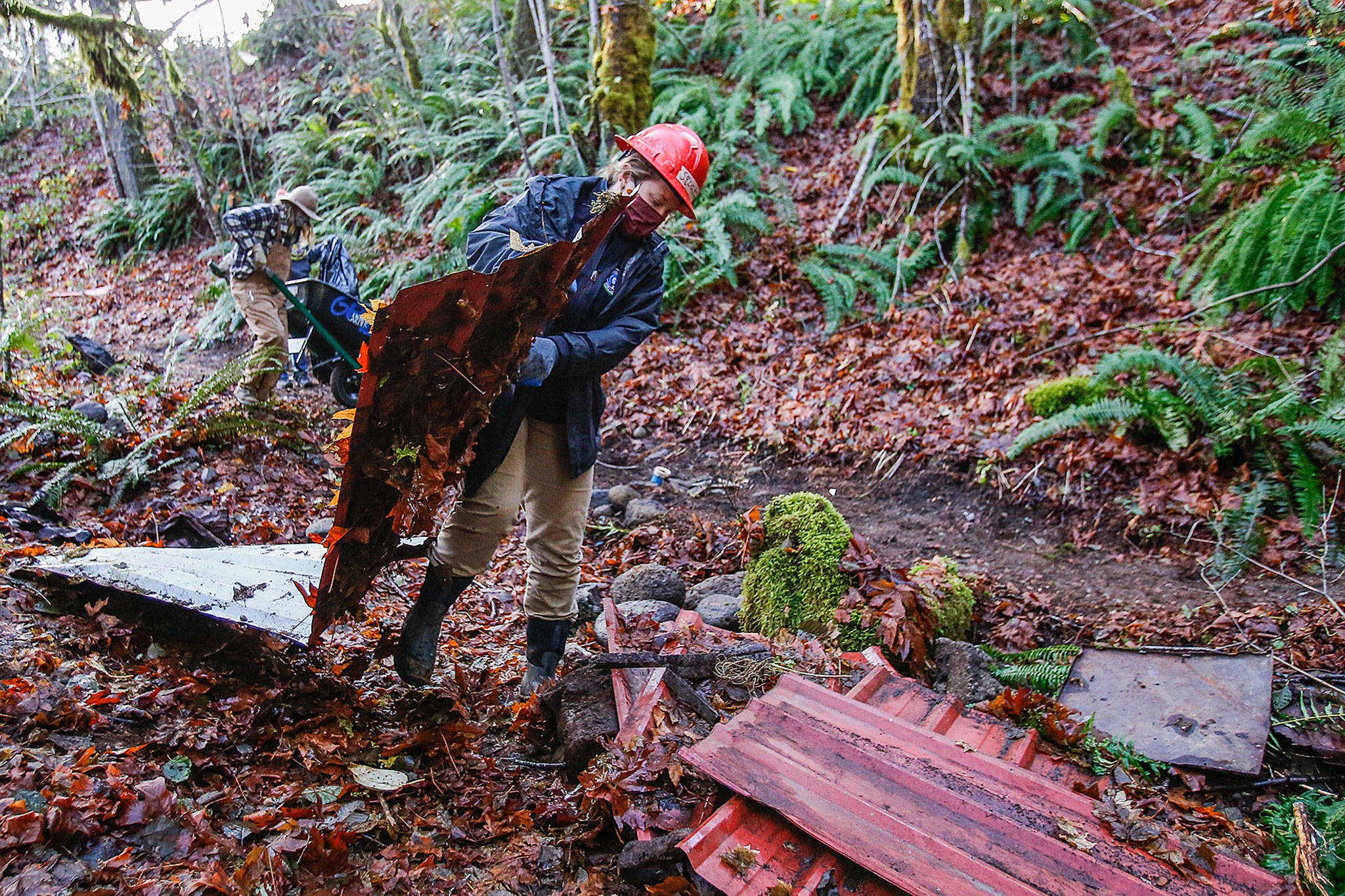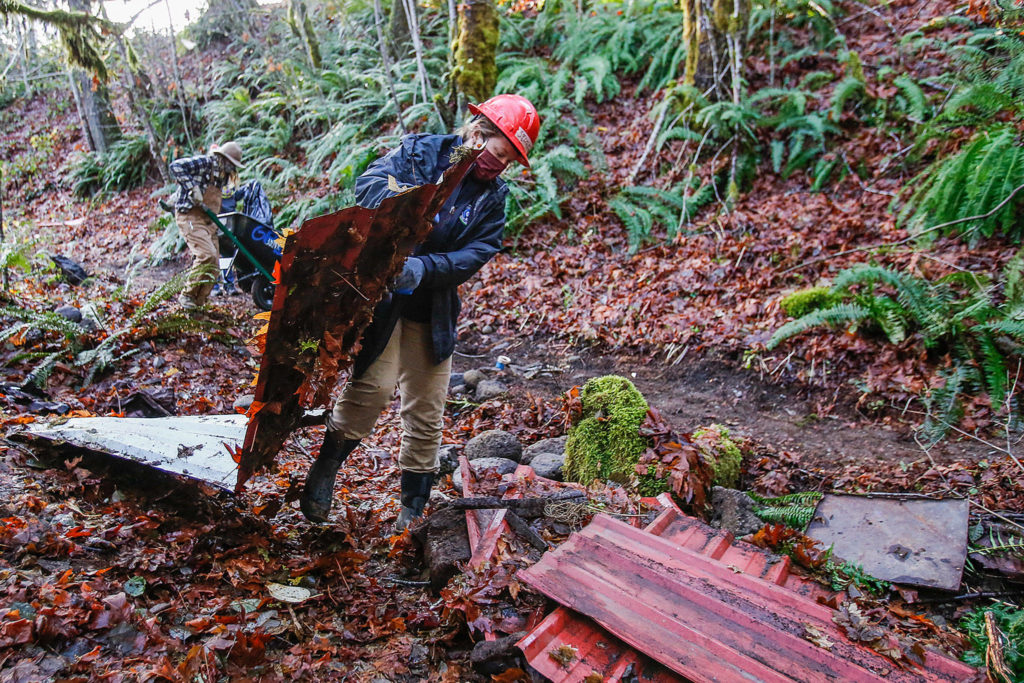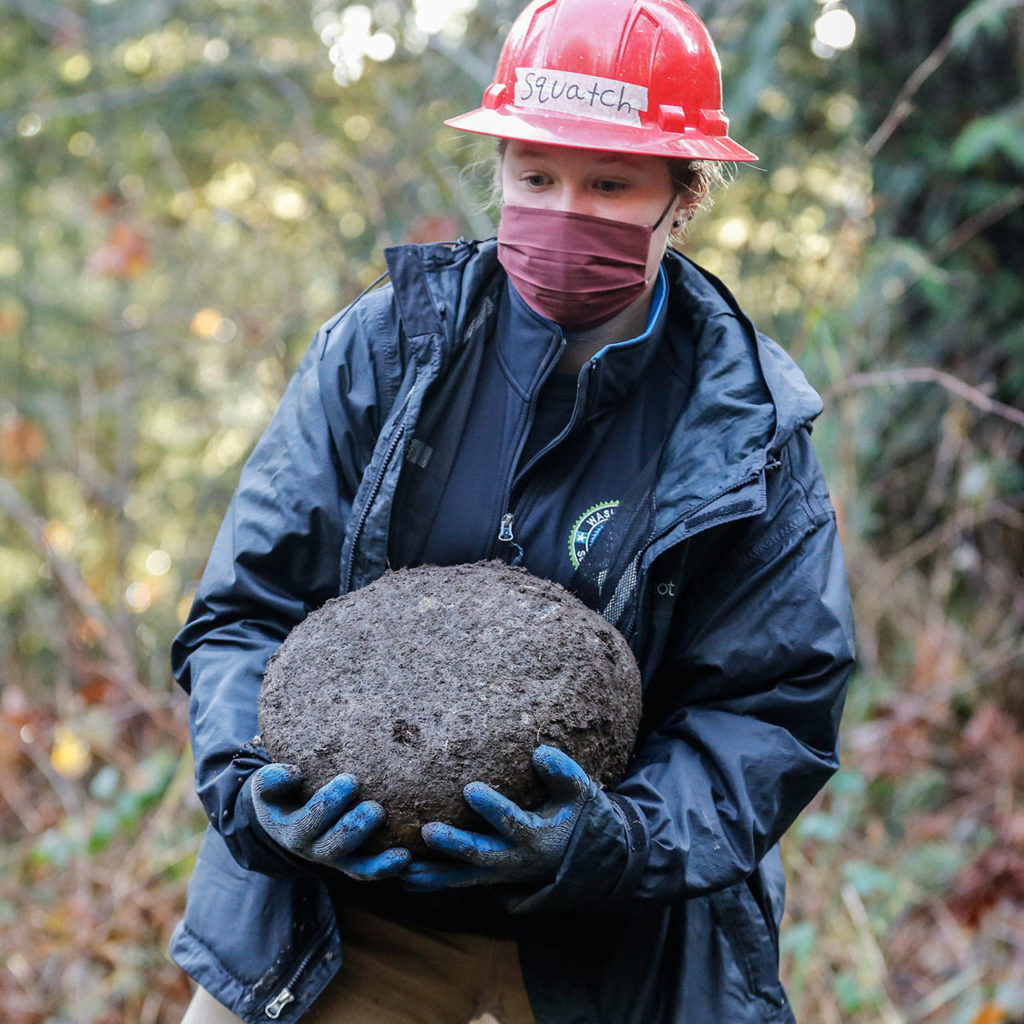DARRINGTON — You can hear the Sauk River from Darrington, but there’s no way to access it.
Despite the town’s location in the foothills of the Cascade Range, there aren’t many trails within walking distance. Much of the riverfront property is privately owned, leaving locals without a path down to the river unless they leave town.
That’s something the Glacier Peak Institute, an outdoor leadership organization based in Darrington, aims to change.
On the last Friday of November, a group of students, Institute staff and other neighborhood volunteers left behind a 3-foot-wide path of churned earth as they hacked, dug and sawed a trail through the Hazelnut, Douglas fir and Hemlock trees to a Sauk River side channel.
One day, the path will be a 1-mile loop called the Sauk River Park trail. It’s one way the Institute is working to help local youth explore the wilderness around them.
The Institute was created in the aftermath of the 2014 Oso mudslide near Darrington, a catastrophe that destroyed 49 homes and took 43 lives.
The disaster left the small town reeling — but Darrington struggled even before the Oso slide, executive director Oak Rankin said.
Since the late 1980s, Darrington lost about 90% of its timber-associated jobs, he said. The town has the lowest average household income in all of Snohomish County at $44,583, according to the Economic Alliance of Snohomish County.
The Darrington School District backs up to the Mount-Baker Snoqualmie Forest but lacks the staff to incorporate outdoor adventure into curricula on its own, Rankin said. The Institute helps teachers design science lessons on habitat and ecosystems out in the forest, take kids out hiking or snowshoeing for PE and keep up the school’s greenhouse for plant science learning.
School resources aren’t the only barrier to getting kids outdoors, Rankin said.
Even though Darrington sits on the Cascade Range doorstep, local youth can’t always access outdoor adventure.
“The youth in our community don’t have the proper equipment or gear or even the transportation to get up the mountain so they can access (outdoor recreation) the same way urban people can,” Rankin said.
So the Institute advocates for parks and trails that allow kids to walk out their door and experience what’s available right in town.
On that late November Friday, Darrington High senior Jaime Larson used an axe to hack out roots in what will someday be the Sauk River Park trail. She’s been attending Institute programs for years.
“I just really like being outside and it’s a good excuse to be productive,” Larson said.
Rankin said he hopes to help kids develop life-long outdoor hobbies that boost their mental and physical health and build resilience.
Before the COVID-19 pandemic, the Institute’s programs were all about bridging the urban-rural divide by getting kids from bigger cities out on adventures with youth from Darrington and other surrounding small towns.
But lately they haven’t been able to hold their normal overnight camping and hiking trips or group rafting and canoeing.
Instead, the Institute has been focusing on one-on-one outdoor access by teaming up a volunteer with youth or family to hike, forage for mushrooms, engage in archery or fish.
After Bellingham’s Transition Bikes donated a handful of mountain bikes this past summer, the Institute took kids out to clean up trails and ride the bikes.
For the winter, the organization will focus on virtual programming.
In partnership with the U.S. Forest Service, the Institute is hosting an internship for several students to create videos on stewardship from a local perspective.
Darrington High School senior Amanda Brown is using the internship to introduce other kids to wildlife sciences, something she’s come to love after years of participating in the Institute’s programs.
She first encountered the organization in middle school when staff visited to talk about different environmental career paths in STEM fields. Her sophomore year, they took a field trip to a salmon fishery.
“That was so cool to me,” she said. “It opened up wildlife biology and fisheries to me.”
In her video series, she plans to tackle topics like invasive species, the benefits of bats and wildlife conservation.
“I think (the Institute) is just a nice gateway to a generation of kids that are passionate about protecting the environment and battling climate change,” Brown said. “I’m just really grateful I’ve been able to work with them and discover more about the Pacific Northwest.”
Fundraising support for the Institute started waning even before COVID-19, Rankin said. As the tragedy of the Oso slide fades from the minds of funders, so does the money.
“People are starting to lose interest and those that can help are pulled so many ways with COVID,” he said.
But the Institute received $100,000 of CARES Act funding that will get it through the year.
The organization is currently raising funds for youth programs and plans to have a gear drive in January.
“There’s so many youth in our community who don’t even have proper outdoor gear or good shoes for going out in the rain,” Institute program manager Amanda Jarrett said. “It would be great to provide gear that would encourage kids to participate in our programs during this time.”
Julia-Grace Sanders: 425-339-3439; jgsanders@heraldnet.com; Twitter: @sanders_julia.
How to help
To donate to the Glacier Peak Institute, visit glacierpeakinstitute.org/donate-1.
Talk to us
> Give us your news tips.
> Send us a letter to the editor.
> More Herald contact information.





























